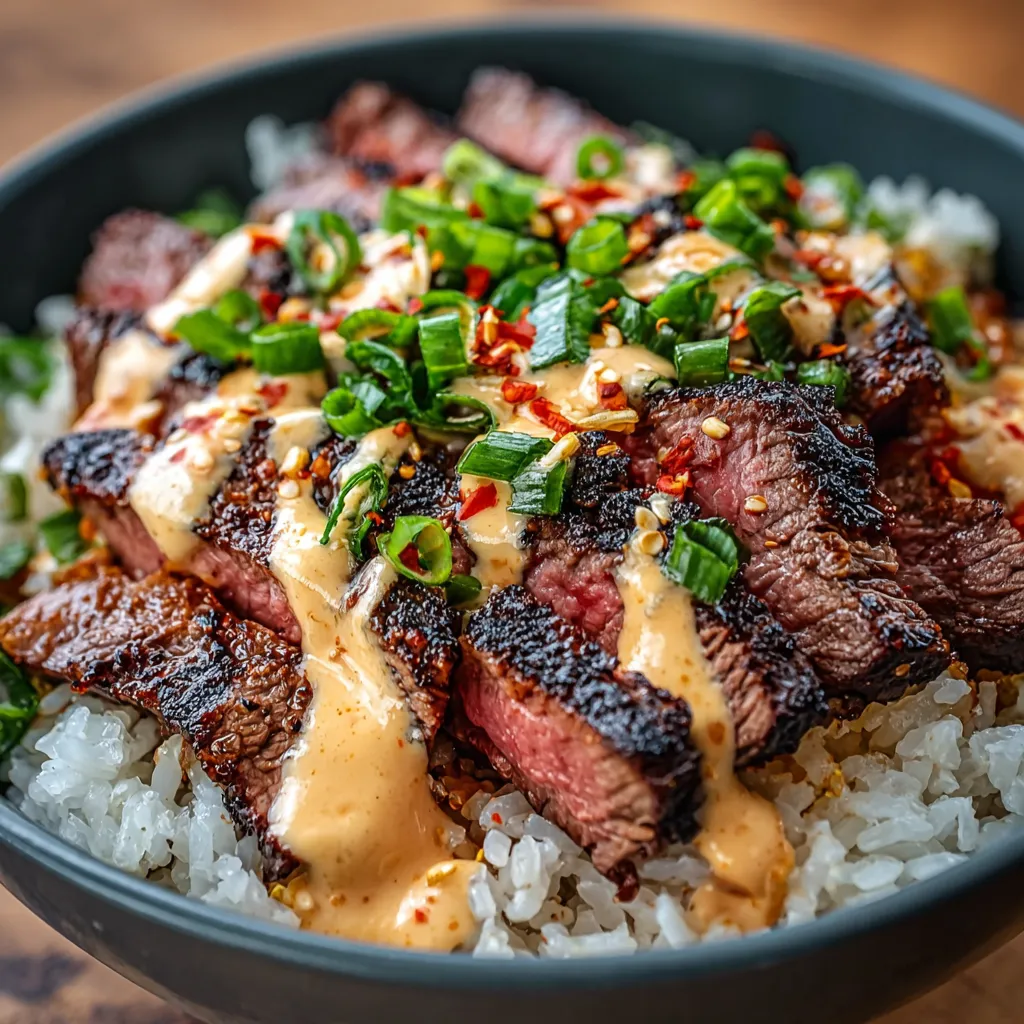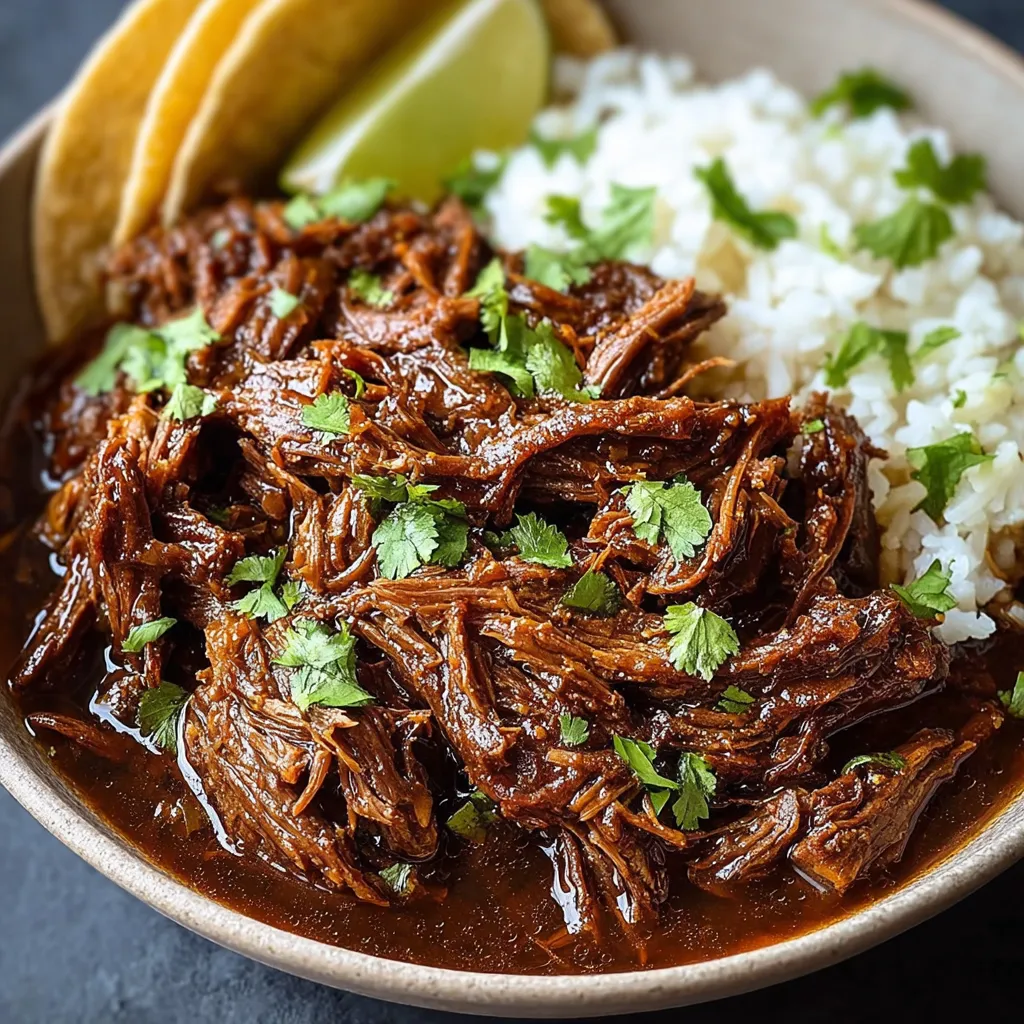Unlocking Umami: The Science Behind the Bowl
The magic of a Korean BBQ steak rice bowl hinges on a carefully constructed symphony of flavors and textures. At its heart is the *maillard reaction*, the chemical process responsible for the delectable browning and savory notes in the steak. This reaction, occurring between amino acids and reducing sugars at high temperatures, creates hundreds of flavor compounds. But that’s just the beginning. The marinade is crucial. It’s not just about imparting flavor; it’s about tenderizing the meat. Korean marinades typically include soy sauce (umami, salt), sugar (caramelization, sweetness), garlic and ginger (aromatics), sesame oil (nutty depth), and often a fruit puree like Asian pear or kiwi (enzymatic tenderization). These fruits contain enzymes that break down proteins, resulting in a more succulent final product. Then, consider the interplay of the components: the richness of the steak against the fluffy rice, the tangy kimchi providing acidity, the crispness of the vegetables, and the often present creamy, spicy sauce binding it all together. It’s a study in contrasts and complementary flavors, making each bite an experience. Understanding these principles allows us to reverse engineer the restaurant experience and create a truly exceptional bowl at home.The Blueprint: Korean BBQ Steak Rice Bowl Recipe

Ingredients:
- For the Marinade:
- 1/4 cup soy sauce
- 2 tablespoons brown sugar
- 1 tablespoon sesame oil
- 2 cloves garlic, minced
- 1 teaspoon grated ginger
- 1 tablespoon gochujang (Korean chili paste), adjust to taste
- 1 tablespoon rice wine vinegar
- 1/4 cup grated Asian pear (or substitute with apple)
- 1/4 teaspoon black pepper
- For the Steak:
- 1 pound flank steak or ribeye, thinly sliced against the grain
- 1 tablespoon vegetable oil, for searing
- For the Rice Bowls:
- Cooked rice (white or brown), for serving
- 1 cup kimchi, chopped
- 1 carrot, julienned
- 1 cucumber, thinly sliced
- 1/2 cup bean sprouts, blanched
- 2 scallions, thinly sliced
- Sesame seeds, for garnish
- Optional: fried egg, gochujang mayo (gochujang mixed with mayonnaise)
Instructions:
- Marinate the Steak: In a bowl, whisk together all the marinade ingredients. Add the sliced steak to the marinade, ensuring it’s well coated. Marinate in the refrigerator for at least 30 minutes, or up to 4 hours. The longer it marinates, the more flavorful and tender the steak will be.
- Prepare the Rice and Toppings: While the steak is marinating, cook the rice according to package instructions. Prepare all the toppings: chop the kimchi, julienne the carrot, slice the cucumber, blanch the bean sprouts (if using), and slice the scallions.
- Cook the Steak: Heat vegetable oil in a large skillet or wok over high heat. Add the marinated steak to the hot skillet in a single layer (work in batches if necessary to avoid overcrowding). Sear the steak for 1-2 minutes per side, until nicely browned and cooked to your desired doneness. Be careful not to overcook it, as it can become tough.
- Assemble the Rice Bowls: Divide the cooked rice among bowls. Top with the Korean BBQ steak, kimchi, carrot, cucumber, bean sprouts, and scallions. Drizzle with gochujang mayo (if using) and sprinkle with sesame seeds. Optionally, add a fried egg on top.
- Serve: Serve immediately and enjoy!
My Korean BBQ Odyssey: A Culinary Investigation
The Initial Stumbles: Flavor Deficit and Tough Texture
My first few attempts were a disaster. I rushed the marinating process, resulting in bland steak that was tougher than shoe leather. Like many of you, I initially thought a quick 15-minute marinade would suffice. Wrong! The flavors barely penetrated the meat, and the enzymes from the Asian pear didn’t have enough time to work their tenderizing magic. The rice was either mushy or undercooked, and my “kimchi” was a sad, vinegary cabbage that bore little resemblance to the fermented goodness I craved. I even tried to shortcut with a pre-made marinade which resulted in a overly sweet, artificial tasting final product.The “Aha!” Moment: Embracing Patience and Ingredient Quality
Then, I had an “Aha!” moment. I realized that this wasn’t just about throwing ingredients together; it was about understanding the nuances of each component. I started using high-quality flank steak from a local butcher, ensuring it was sliced thinly against the grain. I invested in proper gochujang and learned the art of making perfectly cooked rice. Most importantly, I embraced patience. A 4-hour marinade made a world of difference. I also learned the importance of searing the steak quickly over high heat to lock in the juices and create a beautiful crust. When I combined that steak with the fluffy rice, some Garlic Butter Steak Bites, and the other components, it was like a taste explosion.The Sauce Revelation: Gochujang Mayo is King
The final piece of the puzzle was the sauce. Initially, I was just using plain gochujang, which was a bit too intense. Then, I discovered the magic of gochujang mayo. Mixing the spicy, fermented chili paste with creamy mayonnaise created a sauce that was both flavorful and balanced. It tied all the elements of the bowl together perfectly. One night, I was feeling adventurous and decided to add some of the steak to my Steak & Queso Rice – it was amazing!Beyond the Bowl: Culinary Explorations
I experimented with different variations of the bowl. Sometimes, I added a fried egg for extra richness. Other times, I swapped out the cucumber for pickled radishes for a bit of tang. I even tried using Garlic Butter Steak as a variation, which was a decadent twist. Each variation offered a unique flavor profile, but the core principles remained the same: high-quality ingredients, proper marinating, and a balanced combination of flavors and textures. Thinking back on my experiments, I realized it shared common ground with the Mediterranean Steak Bowl, in the sense that it’s a balanced meal with a good protein source and various textures.The Zen of Korean BBQ Bowls: A Foolproof Technique
Here’s the refined approach to creating the perfect Korean BBQ steak rice bowl, distilled from my trials and triumphs:- Source Wisely: Begin with high-quality flank steak or ribeye, thinly sliced against the grain. This ensures tenderness and optimal flavor absorption.
- Marinate with Patience: Marinate the steak for at least 30 minutes, but ideally 4 hours, to allow the flavors to penetrate and the enzymes to tenderize the meat.
- Rice is Right: Master the art of cooking perfect rice. Whether you prefer white or brown rice, ensure it’s cooked to fluffy perfection.
- Prep Like a Pro: Prepare all the toppings in advance. Chop the kimchi, julienne the vegetables, and slice the scallions. This streamlines the assembly process.
- Sear with Speed: Sear the marinated steak in a hot skillet or wok for 1-2 minutes per side, until nicely browned and cooked to your desired doneness.
- Sauce it Up: Elevate your bowl with a drizzle of gochujang mayo. This creamy, spicy sauce ties all the elements together.
- Garnish with Grace: Sprinkle with sesame seeds and consider adding a fried egg for extra richness and visual appeal.
Why is marinating the steak so important for Korean BBQ steak rice bowls?
Marinating tenderizes the meat and infuses it with flavor. The marinade contains ingredients like soy sauce, sugar, garlic, ginger, sesame oil, and often fruit puree, which work together to break down proteins and create a more succulent and flavorful final product.
What is gochujang mayo and why is it recommended?
Gochujang mayo is a mixture of gochujang (Korean chili paste) and mayonnaise. It’s recommended because it creates a balanced sauce that is both spicy and creamy, tying all the elements of the rice bowl together perfectly.
What type of steak is best to use for this recipe, and how should it be prepared?
Flank steak or ribeye is recommended, thinly sliced against the grain. This ensures tenderness and optimal flavor absorption during marinating.
How long should I marinate the steak?
The steak should be marinated for at least 30 minutes, but ideally for 4 hours. A longer marinating time allows the flavors to penetrate the meat more deeply and gives the enzymes from ingredients like Asian pear time to tenderize the steak.

Best Korean BBQ Steak Rice Bowls
Ingredients
Equipment
Method
- In a bowl, whisk together soy sauce, brown sugar, sesame oil, minced garlic, grated ginger, gochujang, rice wine vinegar, grated Asian pear (or apple), and black pepper.
- Add the sliced steak to the marinade, ensuring it’s well coated. Marinate in the refrigerator for at least 30 minutes, or up to 4 hours.
- Cook the rice according to package instructions.
- Prepare all the toppings: chop the kimchi, julienne the carrot, slice the cucumber, and blanch the bean sprouts.
- Heat vegetable oil in a large skillet or wok over high heat.
- Add the marinated steak to the hot skillet in a single layer (work in batches if necessary).
- Sear the steak for 1-2 minutes per side, until nicely browned and cooked to your desired doneness.
- In a small bowl, mix gochujang with mayonnaise to create gochujang mayo (optional).
- Divide the cooked rice among bowls.
- Top with the Korean BBQ steak, kimchi, carrot, cucumber, bean sprouts, and scallions.
- Drizzle with gochujang mayo (if using) and sprinkle with sesame seeds. Optionally, add a fried egg on top.
- Serve immediately and enjoy!




